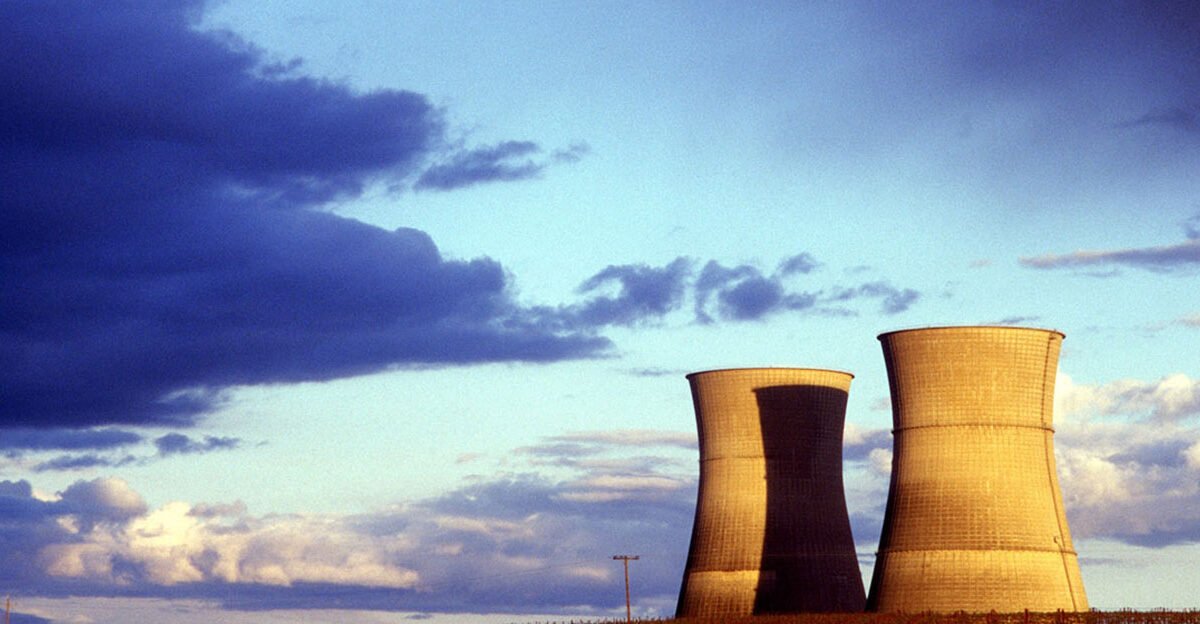Nuclear energy is the utilization of atomic responses to create power. Thermal power can be gotten from atomic splitting, atomic rot and atomic combination responses. As of now, by far most of power from atomic power is created by atomic splitting of uranium and plutonium at thermal energy stations. Atomic rot processes are utilized in unambiguous applications, for example, radioisotope thermoelectric generators in some space tests like Voyager 2. Producing power from combination power stays a focal point of worldwide exploration.
Most influence plants utilize warm reactors with enhanced uranium in a one-time fuel cycle. The fuel is taken out when the level of iotas engrossing neutrons turns out to be enormous to the point that a chain response can presently not be maintained, regularly 3 years. It is then cooled for quite some time in an on location spent fuel pool prior to being moved to long haul stockpiling. The spent fuel, albeit little in amount, has an elevated degree of radioactive waste. While its radioactivity diminishes quickly, it should be confined from the biosphere for countless years, albeit new advancements (like quicker reactors) can possibly lessen this essentially. Since the spent fuel is still for the most part fissile material, a few nations (like France and Russia) go back over their spent fuel by separating fissile and rich components for assembling into new powers, albeit this cycle is mined. More costly than the creation of new fuel from uranium. All reactors produce some plutonium-239, which is tracked down in spent fuel, and in light of the fact that Pu-239 is the favored material for atomic weapons, going back over is viewed as an expansion risk. To read more articles to enhance you education, follow whatisss.
Unique
Atomic parting was found in 1938 following forty years of work on the study of radioactivity and the development of new atomic physical science portraying the parts of molecules. Not long after the revelation of the splitting system, it was understood that a parting core could instigate further atomic parting, in this way prompting a self-supporting chain response. When this was tentatively affirmed in 1939, researchers from a few nations requested of their legislatures to help atomic parting research, toward the finish of World War II, for the improvement of an atomic weapon.
In the United States, these exploration endeavors prompted the development of the main man-made atomic reactor, the Chicago Pile-1, which accomplished noticeable quality on December 2, 1942. The improvement of the reactor was essential for the Manhattan Project, a cooperative exertion. Assemble nuclear bombs during World War II. This prompted the development of enormous single-reason creation reactors to deliver weapons-grade plutonium for use in the principal atomic weapons. The United States tried the primary atomic weapon in July 1945, the Trinity test, with the nuclear bombings of Hiroshima and Nagasaki a month after the fact. To know more about nuclear energy, check out Nuclear Energy Pros And Cons.
First power age
The main association to foster commonsense atomic power was the US Navy, with the S1W reactor expected to control submarines and plane carrying warships. The first atomic controlled submarine, the USS Nautilus, was sent off adrift in January 1954. The S1W reactor was a compressed water reactor. This plan was picked in light of the fact that it was less complex, more reduced and simpler to work than elective plans, hence more appropriate for use in submarines. This choice will bring about the PWR being the reactor of decision in any event, for unfortunate age, hence lastingly affecting the regular citizen power market into the indefinite future.
On June 27, 1954, the Obninsk Nuclear Power Plant in the USSR turned into the world’s most memorable thermal energy station to create power for the power matrix, delivering around 5 MW of power. The world’s most memorable business thermal energy plant, Calder Hall in Windscale, England, was associated with the public power matrix on 27 August 1956. Likewise with a few other age reactors, the plant had the double reason for delivering power and plutonium-239. , the last option for the beginning atomic weapons program in Britain.
Thermal energy stations
Thermal energy stations are nuclear energy plants that produce power by utilizing the nuclear power let out of atomic splitting. A splitting thermal energy station is commonly made out of an atomic reactor, in which atomic responses creating heat occur; a cooling framework, which eliminates heat from inside the reactor; a steam turbine, which converts heat into mechanical energy; An electric generator, which changes over mechanical energy into electrical energy.
At the point when a neutron strikes the core of a uranium-235 or platonium particle, it can part the core into two more modest cores. The response is called atomic parting. The parting response discharges energy and neutrons. The delivered neutrons can slam into other uranium or plutonium cores, setting off new splitting responses, which discharge more energy and more neutrons.
Related posts
Subscribe Now
* You will receive the latest news and updates on your favorite celebrities!
Meet the Author

Gillion is a multi-concept WordPress theme that lets you create blog, magazine, news, review websites. With clean and functional design and lots of useful features theme will deliver amazing user experience to your clients and readers.
Learn moreCategories
- Animals (6)
- Business (579)
- Cooking (3)
- Design (17)
- Education (59)
- Entertainment (62)
- FASHION (89)
- Fashion (39)
- Featured (19)
- FOOD (42)
- Guide (55)
- Health (290)
- HOME (184)
- Interior (14)
- Life (8)
- Lifestyle (111)
- Motivation (6)
- News (47)
- People (4)
- Photography (5)
- Review (4)
- Style (4)
- TECH (176)
- Travel (107)
- Uncategorized (1,441)



Stay connected